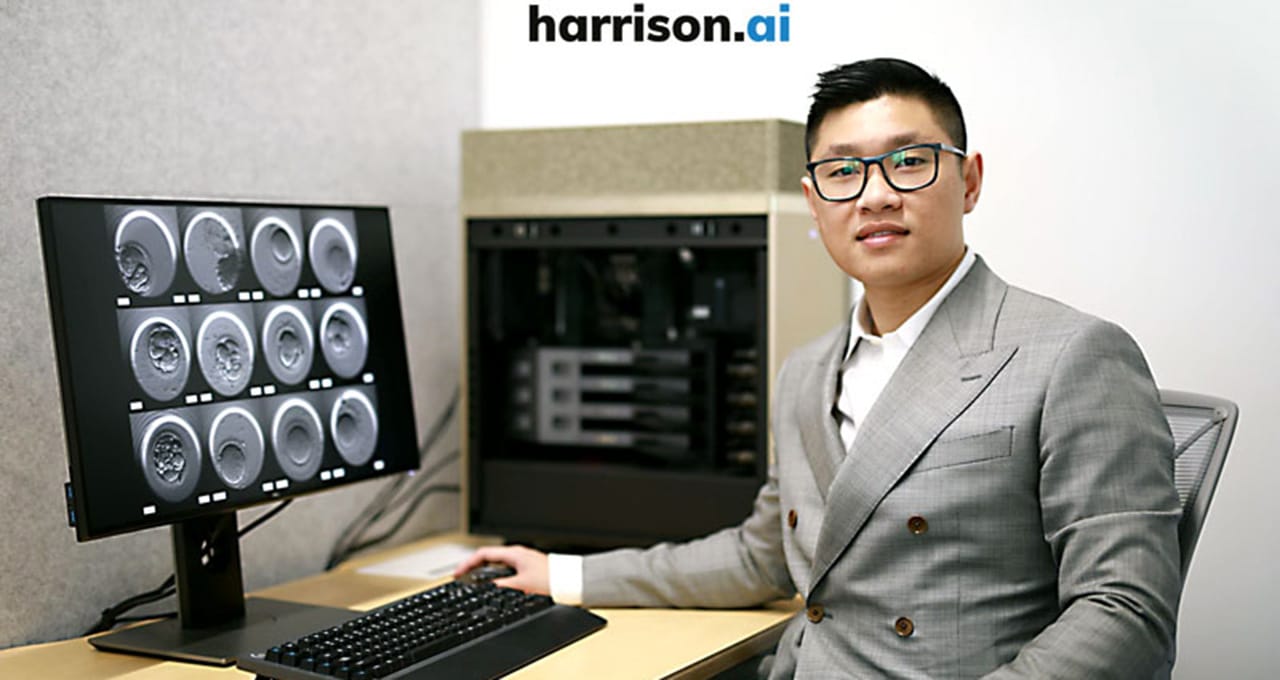In vitro fertilization, a common treatment for infertility, is a lengthy undertaking for prospective parents, involving ultrasounds, blood tests and injections of fertility medications. If the process doesn’t end up in a successful pregnancy — which is often the case — it can be a major emotional and financial blow.
Sydney-based healthcare startup Harrison.ai is using deep learning to improve the odds of success for thousands of IVF patients. Its AI model, IVY, is used by Virtus Health, a global provider of assisted reproductive services, to help doctors evaluate which embryo candidate has the best chance of implantation into the patient.
Founded by brothers Aengus and Dimitry Tran in 2017, Harrison.ai builds customized predictive algorithms that integrate into existing clinical workflows to inform critical healthcare decisions and improve patient outcomes.
Ten or more eggs can be harvested from a patient during a single cycle of IVF. The embryos are incubated in the lab for five days before the most promising candidate (or candidates) are implanted into the patient’s uterus. Yet, the success rate of implantation for five-day embryos is under 50 percent, and closer to 25 percent for women over the age of 40, according to the U.S. Centers for Disease Control and Prevention.
“In the past, people used to have to implant three or four embryos and hope one works,” said Aengus Tran, cofounder and medical AI director of Harrison.ai, a member of the NVIDIA Inception virtual accelerator program, which offers go-to-market support, expertise, and technology for AI startups revolutionizing industries. “But sometimes that works a little too well and patients end up with twins or triplets. It sounds cute, but it can be a dangerous pregnancy.”
Built using NVIDIA V100 Tensor Core GPUs on premises and in the cloud, IVY processes time-lapse video of fertilized eggs developing in the lab, predicting which are most likely to result in a positive outcome.
The goal: a single embryo transfer that leads to a single successful pregnancy.
Going Frame by Frame
Embryologists manually analyze time-lapse videos of embryo growth to pick the highest-quality candidates. It’s a subjective process, with no universal grading system and low agreement between experts. And with five days of footage for every embryo, it’s nearly impossible for doctors to look at every frame.
Harrison.ai’s IVY deep learning model analyzes the full five-day video feed from an embryoscope, helping it surpass the performance of AI tools that provide insights based on still images.
“Most of the visual AI tools we see these days are image recognition,” said Aengus. “But with an early multi-cell embryo, the development process matters a lot more than how it looks at the end of five days. The critical event could have happened days before, and the damage already done.”
The company trained its deep learning models on a dataset from Virtus Health including more than 10,000 human embryos from eight IVF labs across four countries. Instead of annotating each video with detailed morphological features of the embryos, the team classified each embryo with a single label: positive or negative outcome. A positive outcome meant that a patient’s six-week ultrasound showed a fetus with a heartbeat — a key predictor of successful live births.
In a recent study, IVY was able to predict which embryos would develop a heartbeat with 93 percent accuracy. Aengus and Dimitry say the tool could help standardize embryo selection by reducing disagreement among human readers.
To keep up with Harrison.ai’s growing training datasets, the team upgraded their GPU clusters from four GeForce cards to the NVIDIA DGX Station, the world’s fastest workstation for deep learning. Training on the Tensor Core GPUs allowed them to leverage mixed-precision computing, shrinking their training time by 4x.
“It’s almost unreal to have that much power at your fingertips,” Aengus said. Using the DGX Station, Harrison.ai was able to boost productivity and improve their deep learning models by training with bigger datasets.
The company uses the deskside DGX Station for experimentation, research and development. For training their biggest datasets, they scale up to larger clusters of NVIDIA V100 GPUs in Amazon EC2 P3 cloud instances — relying on NGC containers to seamlessly shift their workflows from on-premises systems to the cloud.
IVY has been used in thousands of cases in Virtus Health clinics so far. Harrison.ai is also collaborating with Vitrolife, a major embryoscope manufacturer, to more smoothly integrate its neural networks into the clinical workflow.
While Harrison.ai’s first project is for IVF, the company is also developing tools for other healthcare applications.
To learn more, read our case study.
